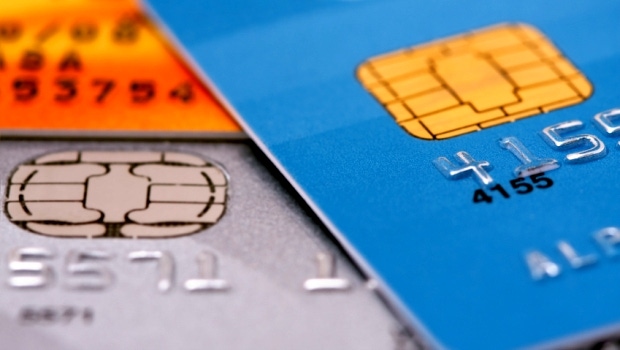What Does EMV Mean for Self-Storage Operators? Payment Technology and the New Credit Card Security Standard
With changes in EMV credit card liability fast approaching, many self-storage operators are wondering how they might be affected. In this article, a payment-technology expert clears up the confusion surrounding the new chip-based cards.
August 17, 2015

By Mark Smith
Self-storage operators know that accepting credit card payments is much more complex than it appears on the surface. There are any number of considerations—security, recurring payments, declined cards, hardware, software, reconciliations—and the list goes on.
Now there’s a new factor in the mix: EMV smart cards. EMV stands for Europay, MasterCard and Visa, the three companies that originally created the payment standard. There’s a great deal of confusion in the self-storage industry about these new chip-based cards, so I turned to an expert in the field of payment processing to find out how facility operators are being affected.
The following is an interview with Sid Singh, president of OpenEdge, the technology-innovation division of Global Payments Inc. Singh’s payments career spans nearly 15 years across a wide variety of business units and geographies. He’s held various roles at Global Payments and was part of the founding team for the company’s Asia business. Here’s what he has to say about EMV and self-storage.
What is EMV?
EMV is a chip technology used globally in place of the magnetic stripe. It helps reduce card fraud in a face-to-face card-present environment and enables safer and smarter transactions. EMV chips work via contact with a device or through near-field communication.
Why is EMV coming now?
EMV has been the credit card standard in most industrialized nations for years. The United States is among the last holdouts, and technically advanced criminals have exploited that situation. It’s a more secure model for processing payments, so thieves have naturally gravitated toward the easier-to-steal data on magnetic stripe cards. The result has been a series of high-profile and damaging card-data breaches.
In fact, while the U.S. accounts for only a quarter of the world’s transactions, about half of all credit card fraud happens here. EMV will correct that disparity and help make digital commerce safer.
To what extent will EMV impact self-storage operators?
We all know that card-not-present transactions are common in our industry. EMV will reduce fraud for card-present transactions at the purchase location. So, EMV will not be as prevalent in self-storage as in restaurants, for instance. However, if you take credit card payments onsite, you’ll need to account for EMV.
What is the EMV liability shift, and when does it occur?
A shift will occur in October. The liability for fraudulent transactions will move from card issuers to merchants if an EMV card is presented for payment and it’s swiped or entered manually. In this scenario, the merchant would be liable for the fraud, not the issuer. The merchant could potentially be presented with fines from the card brands.
Does an EMV smart card look different?
A smart card resembles a traditional credit card. EMV cards, however, contain an embedded microprocessor under a gold contact pad. When the consumer uses an EMV card, he won’t “swipe” it. Rather, the hardware has a slot where the card is inserted to authenticate.
Is EMV a law to which businesses must comply?
EMV is not a law, nor is it mandatory for businesses. However, after the flurry of recent high-profile data breaches, the payment industry has agreed that the liability shift will occur in October. That means businesses that had the opportunity to accept EMV, but didn’t, could be liable if an avoidable card-data breach occurred.
So, self-storage operators don’t need to implement EMV?
Technically, no. I strongly encourage any merchants accepting card-present transactions to migrate to EMV. However, businesses must ask themselves a number of questions. What’s the cost of implementation? What’s my current fraud liability, and does moving to EMV make sense in light of the potential impact to my business? What other security solutions do I have in place? If I don’t do EMV, how can I make sure customers are protected when paying with a card?
Will businesses be charged more?
EMV is a card network initiative. Currently, the card networks will be charging the same interchange rates for EMV and non-EMV transactions.
What does a self-storage operator need to do and by when?
Each business will need to consider the pros and cons of accepting EMV. The liability shift occurs in October, so I would suggest self-storage operators start thinking about it now. They’ll need payment software—often integrated into their point-of-sale (POS)—and hardware that can accept EMV payments.
My recommendation is to speak with your POS software provider or payments processor. Ask about the solutions they have in place to ensure EMV smart card acceptance. Ask for specific timelines and how implementation will occur. The bottom line is the EMV shift is coming, and self-storage operators will need partners who can help them prepare for it.
Mark Smith is the director of self-storage product marketing at Yardi, which provides software systems for real estate management, including products for self-storage. He has more than 25 years of experience with enterprise-level software systems, including 14 years with Yardi. For more information, call 800.866.1144; visit www.yardi.com.
Global Payments provides electronic transaction processing services for financial institutions, government agencies, independent sales organizations, merchants and multi-national corporations. For more information, call 800.513.2579; visit www.openedgepay.com.
You May Also Like





